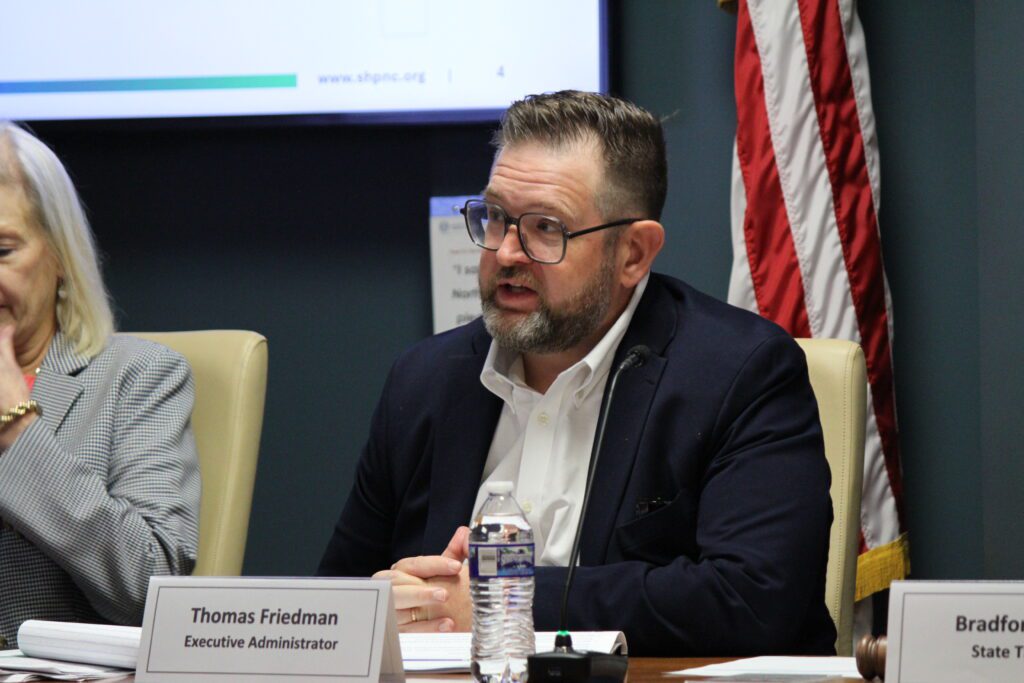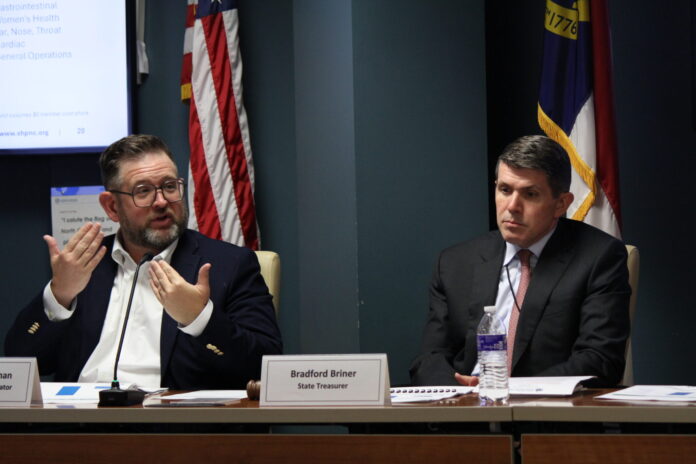The State Health Plan Board of Trustees approved changes to benefits for state employees on Tuesday.
This vote comes after the board has spent the last several months working to address an expected deficit of $500 million for the plan, which could grow to an estimated $1.4 billion by 2027.
Board members are hoping that some of this deficit will be offset by additional funding from the state legislature. Both the House and Senate budget proposals fully fund the plan’s request of an additional 5% in funding per year.
Notice: JavaScript is required for this content.
However, board members said on Tuesday that changes to plan benefits are necessary to avoid even higher premium increases for members.
The plan provides health care coverage to nearly 750,000 teachers, charter school employees, community college employees, other state employees, retirees, and dependents.

“As fiduciaries of the plan, we are either voting for benefit changes or more substantial premium increases. Just fundamentally, the two options right now kind of given the reality,” said Tom Friedman, executive administrator of the State Health Plan, on Tuesday.
In his opening remarks to the board, state Treasurer Brad Briner, who chairs the board, said they have worked hard to listen to member feedback and keep costs low for the lowest-paid state employees.
“We began this conversation in January around premium increases for the first time in eight years,” he said. “Buried in the materials here, you’ll see that what was going to be a $20 premium increase at the lowest tier is now a $5 rate of increase. … It is in part just us listening to the feedback that we’ve gotten from so many constituent groups, which we really appreciate, to try to figure out what the highest and best use of the dollars we have are, and making sure that we insulated our lowest compensated state employees from those premium increases as much as we possibly can.”
EdNC previously reported on example changes the board was considering, which would have seen a $20 premium increase at the lowest tier.
During the public comment period, N.C. Association of Educators (NCAE) President Tamika Walker Kelly urged the board to not make changes to the plan.
“Considering the state of educator pay here in North Carolina, asking them to shoulder higher health care costs is not only unfair, but it is unsustainable. Raising premiums means some employees — our bus drivers, cafeteria workers, teacher assistants, and even teachers themselves — will have to make difficult and impossible choices,” she said. “For many of them, this could be the final push out of the profession entirely. We are already facing a critical staffing shortage. More than 8,000 school positions were vacant at the start of this year, and one in five teachers left the classroom over the past two years. If we increase the cost for those who stay, how will we fill the gaps, and who will be there for our students?”
“Now I am aware and I understand the financial challenges that you are facing as fiduciaries of the State Health Plan. But let’s be clear, the burden should not fall on the backs of underpaid public employees. The legislature and our health plan partners must be asked to do more.”
NCAE President Tamika Walker Kelly
Kimberly Jones, the 2023 Burroughs Welcome Fund North Carolina Teacher of the Year, was the only board member who voted against the plan design changes.
The vote the board took on Tuesday only affects what benefits will look like for the State Health Plan starting on Jan. 1, 2026. The board previously voted to pave the way to charge salary-based premiums, but has not yet voted on what those premiums will be. That vote is expected to take place on Aug. 15.
What changes are being made to the State Health Plan?
In general, there are cost increases across the board. As mentioned above, Briner said the board prioritized keeping premiums and out-of-pocket maximums low in response to feedback from members.
One of the major changes is to the names of the plans. What was previously referred to as the 70/30 plan will be called the Standard PPO Plan, while the 80/20 plan will now be Plus PPO Plan.
The other major changes are to deductibles, particularly on the standard plan.
When it comes to monthly premiums, under the current proposal, costs would go up $5 for the lowest-paid state employees on the standard plan and $20 on the plus plan. However, premiums won’t be finalized until the board votes in August.
You can see all of the changes that were approved on Tuesday in the graphics below.
Board member Dr. Brian Miller highlighted a report from the Kaiser Family Foundation, which looks at employee health benefits annually. The 2024 survey found that “average annual premiums for employer-sponsored health insurance in 2024 are $8,951 for single coverage and $25,572 for family coverage.”
Based on this, he said, keeping premiums below the average market rate for employer-sponsored health insurance and protecting the out-of-pocket maximum are good things for the plan to do.
“So the average single employee in the private insurance market is paying $119 a month for an insurance premium, and then for family coverage, it’s around $532,” he said later. “So we are way — and should strive to be — way below that, recognizing that state wages are lower than the private market. Having a small premium increase, but still very low premiums, is definitely the right way to go.”
In an effort to keep costs down, Friedman told the board about several substantial changes they are exploring. These changes include implementing a preferred provider program that will replace the clear pricing project, which will end on Dec. 31, 2025.
Among other things, the preferred pricing program would involve bundling payments on the administrative side, partnering with certain independent providers, and removing prior authorizations in an effort to improve access to lower cost, high-quality care.
The thought here is that by making primary care easier to access and by providing steady payments to providers, costs can be lowered for members and the plan itself in the long run. Under this plan, members would still be able to use any in-network provider, but would be financially incentivized to see the plan’s preferred providers. If you look back at the graphic of the plan design changes, the co-pays on the far right would apply to preferred providers.
In another vote, the board voted unanimously on Tuesday for State Health Plan workers to begin implementing this program.
“We appreciate that deductible is a big number increase, but we are trying to create a very clear path forward to making that number as close to zero as possible when you need it most,” Friedman said. “We are not going to get to everything year one.”
State Health Plan leaders and board members have continually said they understand this is not an ideal situation to be in and that members don’t want increased premiums. However, Friedman said, they are trying to meet in the middle.
“I understand this is all very different. We have to do something different here to be successful,” he said. “…The more successful we are in these programs by members electing to save money and opt in, the more successful these premium conversations will be in future years. So we all have a role in driving costs down going forward.”
Plan members are expected to receive more information regarding the changes approved on Tuesday before open enrollment takes place in October.
